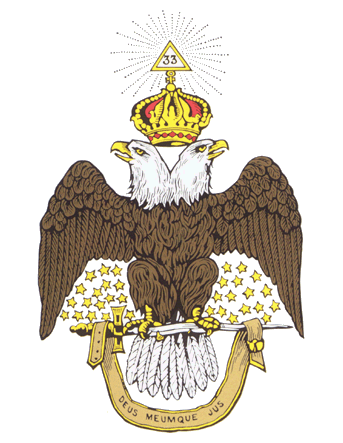Get Today in Masonic History into your Inbox. Sign up today for one of our email lists!
Need an article for your Trestleboard/Newsletter see our Use Policy
History of the Scottish Rite

Today in Masonic History we discuss the history of Scottish Rite.
Scottish Rite is an appendant body of Freemasonry and is meant to increase a Freemason's knowledge of the fraternity and the lessons it teaches.
The date which the Scottish, or higher, degrees first were portrayed is unknown. One attempt at the history of these degrees was provided in 1784 in a book of constitutions written for the Grand Lodge of England. In the book it is claimed King Charles II, while in exile, became a Freemason between 1649 and 1660. There is no record, however, of an active masonic lodge on the European Continent having initiated King Charles II. Unfortunately this false claim was repeated several times and in various documents.
Part of the lore which sprang up around the founding of the Scottish Degrees, King James II, who was King Charles II successor, stayed at the Jesuit College of Clermont where it is claimed he ordered the higher degrees penned. Adding further to the confusion, there is a short lived Masonic Chapter of Clermont. The Masonic Chapter actually had nothing to do with the Jesuit College, it was not even in the town of Clermont. The Masonic Chapter was named for the then Grand Master of the Grand Lodge of France.
In the 1730's there are records in various Masonic Lodges of, what is assumed to be, visiting Brethren performing the "Scots Mason" or "Scotch Mason" degrees. Beyond the records of these degrees being performed there is no evidence of what they entailed.
In the mid 1700's, Étienne Morin founded in France a "Ecossais" Lodge (Scots Master Lodge) whose purpose was the "high" masonic degrees. In 1761 a patent was issued by the Grand Lodge at Paris to Morin granting him the title of "Grand Inspector for all parts of the World". With the patent in hand, Morin headed to the West Indies where he spent the rest of his life spreading high or "Ecossais" degree lodges. The "Ecossais" lodges consisted of 25 degrees.
While in the West Indies, Morin met Henry Andrew Francken. Before his death, Morin made Francken a Deputy Grand Inspector General. Franken wrote three books, the first containing the 15th through the 25th degrees of "Ecossais" masonry. The next two contained degrees from the 4th to 25th.
In 1764, Francken traveled to New Orleans and established the first high Degree Lodge in North America called Loge de Parfaits d' Écosse. In 1767 he traveled to New York and formed the Lodge of Perfection of Albany. This became the first time the degrees of Perfection (4th through 14th) were conferred in the British Colonies.
In 1781, Francken met Moses Michael Hayes, upon who Francken communicated the degrees. Hayes was made by Francken a Deputy Inspector General. Hayes went on to make 8 Deputy Inspector Generals himself.
In May of 1801, what most Scottish Rite masons know as their organization started. Eleven brothers known as the "The Eleven Gentlemen of Charleston," four of which were deputies made by Hayes, formed the Mother Supreme Council. Rites formed around the World following the Mother Supreme Council. The Mother Supreme Council took the degrees used in other parts of masonry and in different forms and combined them into the degree of the Scottish Rite.
Although many associate Albert Pike with the founding of Scottish Rite, it wasn't until 1853 when he became a Scottish Rite Mason receiving his degrees from Albert Mackey. Pike began re-writing the degrees of the Scottish Rite which were rudimentary. To this day Scottish Rite masons will refer to the "Pike Degrees", many of which are still in use. Through Pike's efforts the popularity of Scottish Rite grew in the 19th century.
This article provided by Brother Eric C. Steele.

